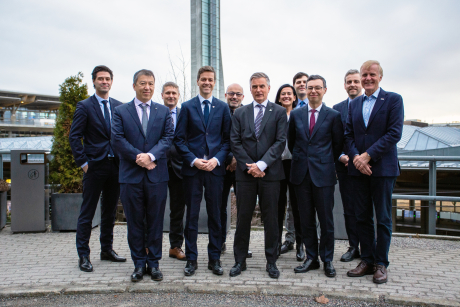Key players from the European aviation industry met in Oslo to set the framework for a unique program that will transform Norwegian air transportation and serve as a learning ground for sustainable aviation on a regional scale.
Representatives from Airbus, Avinor, Leonardo, Safran, SAS Scandinavian Airlines and Widerøe attended a meeting led by the Norwegian Civil Aviation Authority and the European Union Aviation Safety Agency (EASA) to initiate the work of the Task Force on Zero Emissions Aviation.
Air transport essential to Norway.
Minister of Transport of Norway Knut Arild Hareide, joined for the opening session.
Building on experience in other transport sectors and addressing the expectations of its citizens, Norway is taking steps toward the early implementation of emissions-free air transport in its regional market. The geography of Norway means that its many fjords and mountains hinder ground transport – making air transport an essential component of its overall infrastructure.
For Norway, the establishment of the Task Force brings a valuable international dimension to their regional ambition. The engagement of new and established aviation players to consider the environmental, economic, technological, and institutional challenges ensures a comprehensive approach.
A European collaboration.
For EASA as European regulator, the program is aligned with its twin mandate to reduce the environmental impact of aviation while ensuring air travel is safe.
“EASA plays a leading role in actively developing and implementing measures to address environmental challenges. This collaborative effort with CAA Norway and leading representatives from industry provides a strong basis for concrete and effective action to enable innovation and reduce aviation emissions”, said Patrick Ky, Executive Director of EASA.
In its kick-off meeting, the Task Force agreed to draw up a report and roadmap of actionable recommendations to support the Norwegian ambition, which will be presented to the Norwegian government in summer 2020. This will include short-term actions that could be implemented by 2025 or so as well as longer-term actions stretching to 2030 or beyond.
In parallel, the Task Force will work towards solutions that can contribute to the wider European efforts for sustainable aviation. Particular consideration will be given to potential measures and incentives to promote the transition towards emissions-free aircraft.

